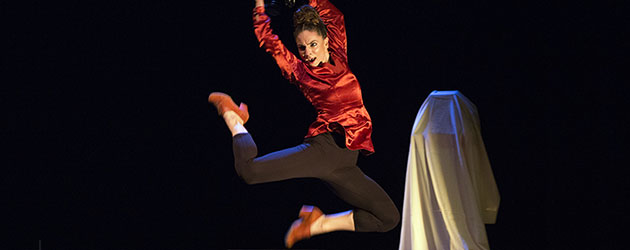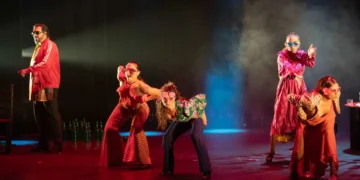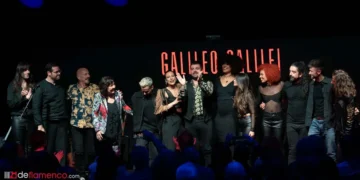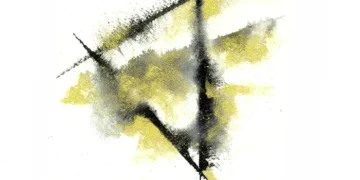Sara Arguijo
Photos: Remedios Málvarez
'Petisa Loca'. Dance: Sara Calero. Voice: Gema Caballero. Guitar José Almarcha. Recorded electronic music: The Lab (José Corredera and Miguel Lázaro) Series: Los Jueves Flamencos de Cajasol. Sala Chicarreros. Thursday, November 2nd, 2017. Full house.
Neruda said there’s a certain pleasure in madness that only the madman knows. This came to mind yesterday at the Andalusian debut of the work “Petisa Loca” that dancer Sara Calero and singer Gema Caballero put on stage, along with the guitarist José Almarcha, in the series Jueves Flamencos de Cajasol. First of all because the performers use the poet as an element in this story, which is a tribute to women’s struggle in every era to achieve freedom, and a reflection of the bittersweet flavor that accompanies any quest. And then too, because we realize in the end that there’s something in the work that we definitely don’t get.
If we speak about artistic quality, it’s clear Sara Calero is more than resourceful enough to dance whatever’s thrown her way, as she joked at the presentation press conference. Furthermore, she never does so from a point of neutrality, but rather puts her incredible body control, technical excellence and artistic conscience at the service of the music with every step, and this makes her convincing, interesting, distinct. And above all, brilliant, when she explores humorous registers, or when she calls upon her classic background and delves into folklore. Impressive twists.
As far as Gema Caballero, she is not only one of the most promising flamenco voices of the current scene –she also demonstrated this last summer in her recitals within the series Noches del Alcázar- but she also sustains the show with her vocal chords showing her infinite register and a musical vision that lends meaning to the show. In the 70 minutes she’s on stage, Caballero questions, moves and stirs the story with her voice an invites us to travel through time and emotions with excellent interpretations such as “Galleguita”, “María Manuela” of Pepe Pinto, and the song “Loca” that closes the work.
The thing is, aside from the problems of this venue, this “Petisa Loca” suffers from stage direction that puts excessive importance on ideas which are supported by the lighting and staging. The pieces, despite the artists’ best efforts, are at times disconnected, lacking in pacing, and this makes it difficult for the audience to connect with the depth which is hinted at. And we are left with the bad taste of wanting to have felt more than we did, and having understood more than we saw. With the desire to see this exploited, everything we know they have inside of them. Because okay, the concept is there, the bravery and intelligence, but we miss the cohesion, the explosion, the friction. To discover and achieve the catharsis and liberation along with them.
Descubre más desde Revista DeFlamenco.com
Suscríbete y recibe las últimas entradas en tu correo electrónico.






































